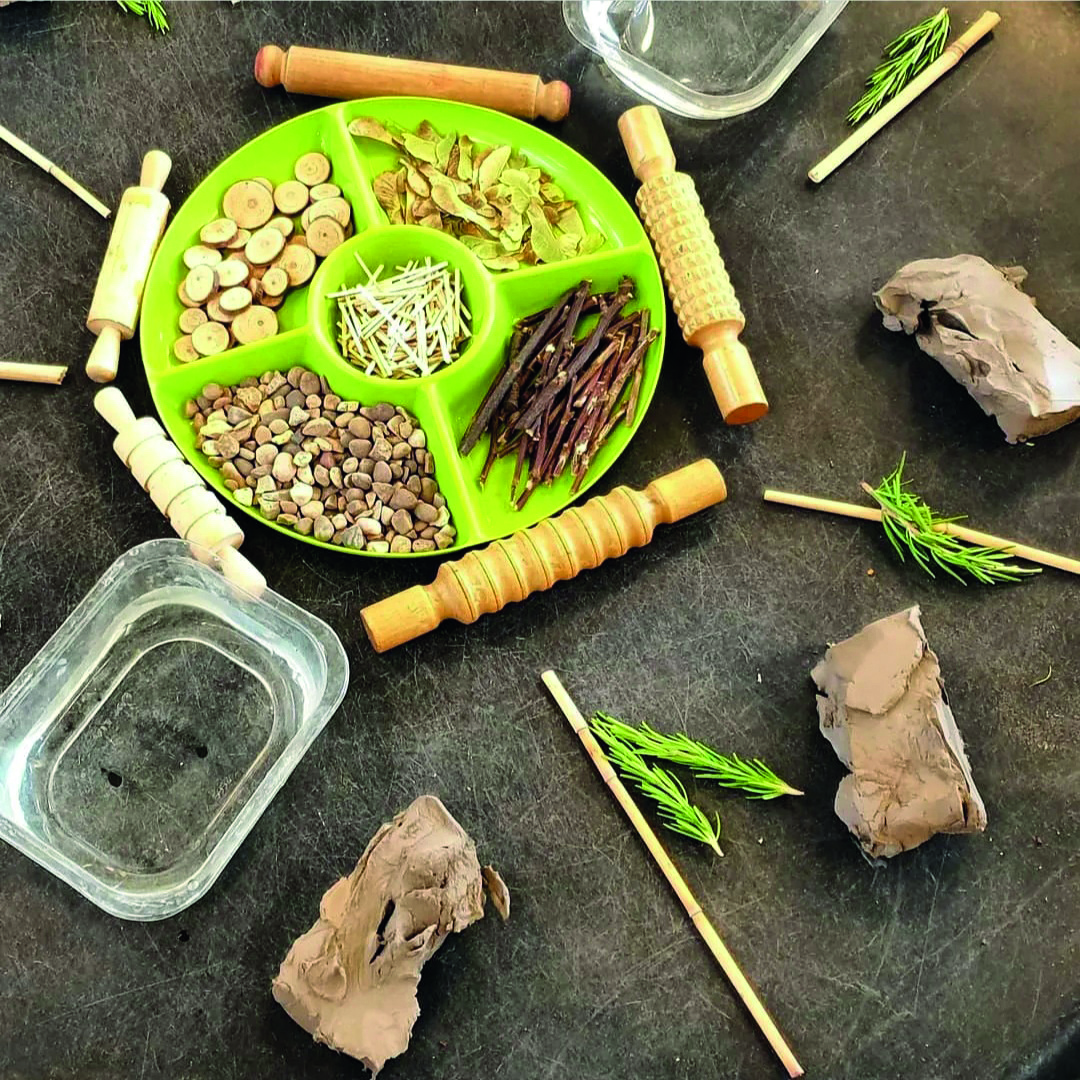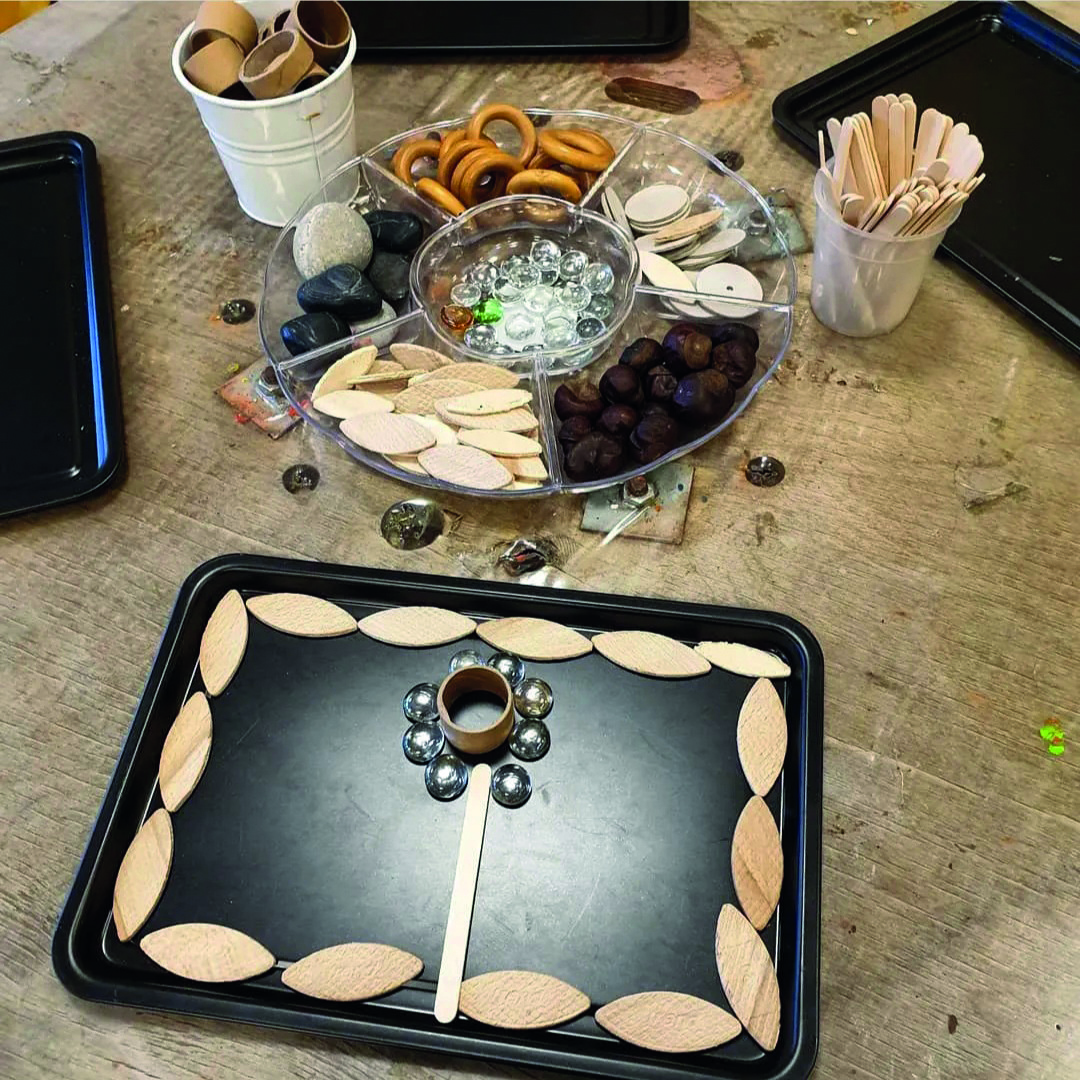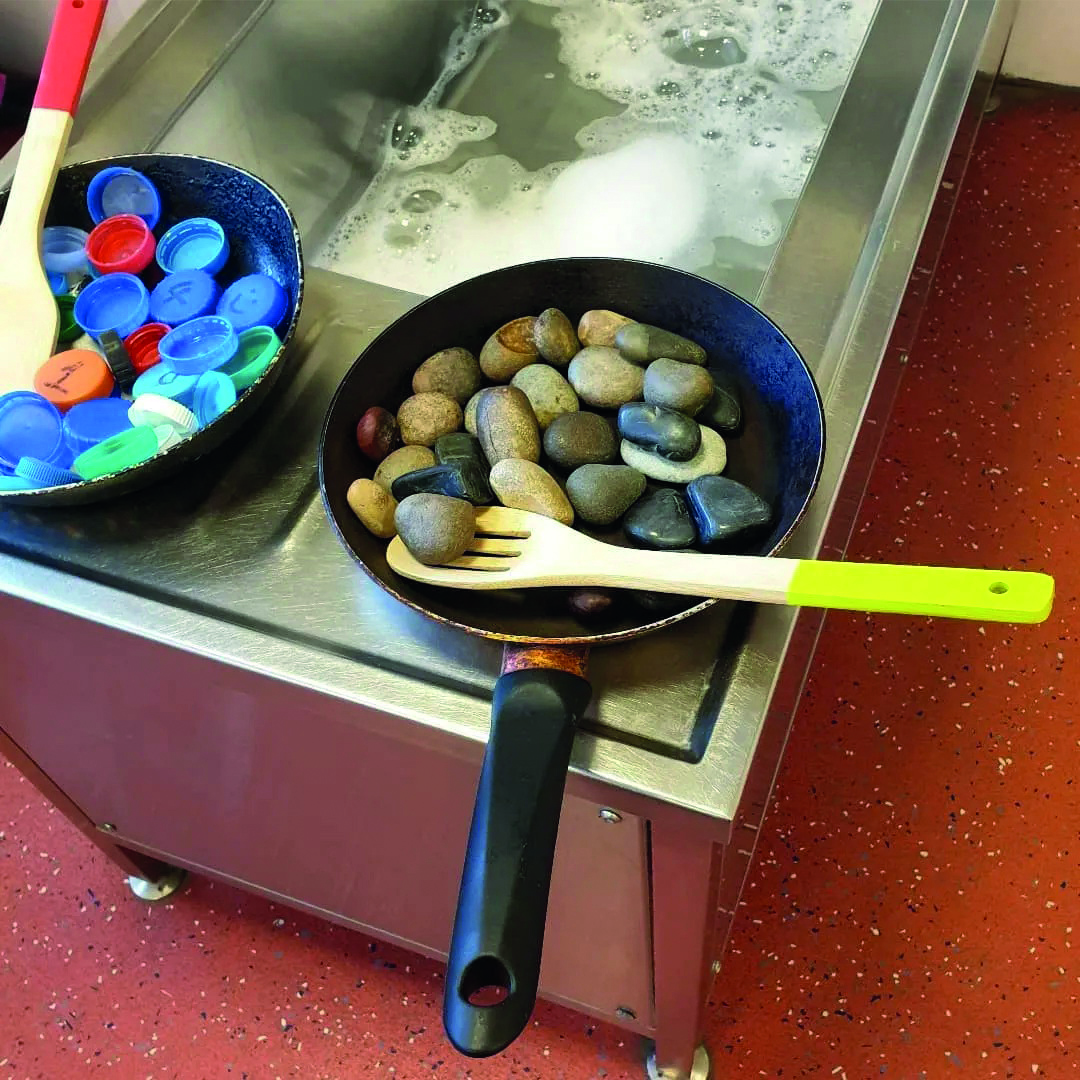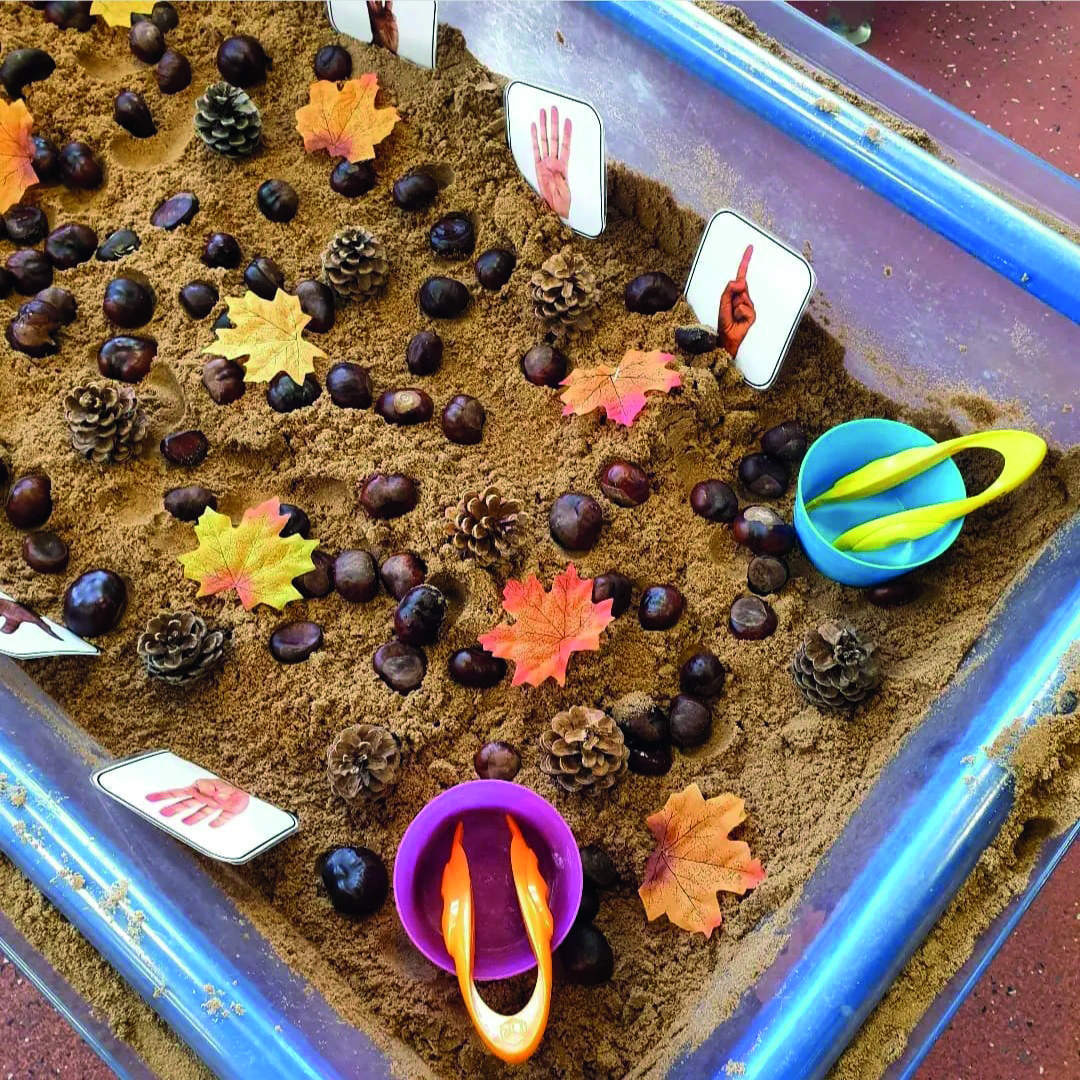
In this series, we have explored how loose parts can be used in open-ended ways in construction as well as being used as concrete objects for maths. But loose parts can be used in lots of different contexts. Here are some examples showing the wide potential for loose-parts play, which can be modelled by adults in order to guide independent learning.
1. Mixed medium

Offering natural loose parts alongside a malleable resource such as clay or playdough is a really good way to introduce mark-making. The benefits of using natural loose parts are that they are different textures and shapes. Once imprinted into the clay, conversations can spark about the different shapes and patterns made. The activity offers opportunity for communication and language development, as well as for co-operative play, where play becomes an interaction between children with collaboration, joint attention and action. But it also allows for children to make and create, to mark-make with no pressure, and to do and re-do, and then ‘rub’ it all out if they wish.
2. Transient art

Transient art is using loose parts to create a piece of artwork on a flat, horizontal surface. Provide the children with a frame, baking tray, tuff tray, or tray of sand and allow them to explore the parts, creating and recreating their artwork. This allows the children to explore colour, positioning, shape and space without the pressure of making a permanent mark on paper. You can offer loose parts in line with the seasons or a topic, or from your general stock.
3. Water play

This is a simple set-up, with stones in containers and spoons, enhanced further with colanders and sieves. This is a lot of fun as well as a good way to give your loose parts a good wash. The children are able to work collaboratively, separating or mixing the loose parts, alongside developing communication and language. This learning can be moved on with adult interaction or left as an independent activity.
4. Fine motor skills

Picking out loose parts from the sand tray using tweezers is a fun way to keep the children engaged in what is usually a five-minute activity. Adding objects such as leaves, conkers and pinecones adds difficulty to the challenge as they are different shapes and sizes. This activity can be developed further by challenging the children to fill their pots in a given amount of time and then counting out the objects to see who has the most/least.
The children in my setting transported some carefully chosen loose parts over to the home corner to use alongside other resources, including predefined resources, to create this spectacular loose parts lunch (see picture). They were in detailed dialogue with each other about the different tastes, smells, textures and colours of their ‘food’. They spoke about the foods they eat at home, with one child commenting that they usually only eat herbed rice served with fish for Nowruz (Iranian New Year). This incredibly special moment came from an understanding by both children that they, their play and their knowledge and experiences are important and valued, and with them feeling comfortable and confident enough in their play to reveal this golden nugget of insight.
The ultimate goal is for child-led exploration and learning which is achieved through play, and loose parts are an ideal vehicle for this.
Shardi Vaziri is the assistant head teacher at Tottenhall Infant School in Enfield, North London and an educational consultant specialising in loose parts and sustainable provision. Contact her at: earlyyearsonashoestring@gmail.com









